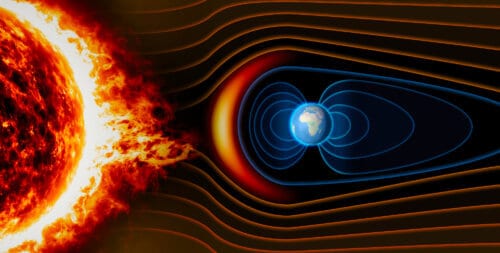הThe new study by researchers from Ariel University was recently published in a professional journal belonging to the IEEE

Researchers from Ariel University, Find a way to predict space weather events, up to 3 days before they happen. These events may have a significant impact on our lives, for example damaging satellites and navigation systems, creating an increased radiation hazard in aviation and posing a risk to the health of astronauts in space and to a lesser extent also to pilots and passengers, causing disruptions in communications and national power grids. The path to prediction was made through the combination of machine learning methods and electron charge density measurements in the ionosphere to predict the weather in space and, in fact, solar storms - which look like lightning.
Space Weather is a field of research that provides new perspectives on the complex interactions and effects of the Sun and other cosmic sources in the layers surrounding the Earth (in the Earth's magnetosphere, ionosphere, and thermosphere), as well as across interplanetary space. The weather in space also affects ground and space technology systems, and even pose a danger to human life and health. Among the effects of solar storms on Earth and in space, one can find disruptions to the proper functioning of satellites and navigation systems, radiation hazards to astronauts and airline passengers, disruptions in data communication, and damage to national power grids. The ability to predict where and when space weather events such as solar flares and X-ray bursts may occur and affect a specific region is a significant challenge in the study of space weather and the interaction of the solar system with the Earth.
Therefore, scientists today are gradually exploring the use of multivariate system analysis techniques from the fields of data mining or machine learning in order to examine future occurrences of space weather events based on past events.
In fact, during the eruption of a solar storm, ultraviolet electromagnetic radiation and X-rays are emitted which affect the ionization processes in the various layers of the ionosphere. Any space technology that makes use of transferring information from space to Earth is actually affected by changes in these layers when the signals cross them on their way to the ground.
Researchers from Ariel University They showed that machine learning methods can be used together with various measurements in space (measurements of the electron charge density in the ionosphere, which are obtained by placing GPS signals during their propagation in the atmosphere, in order to produce predictions of type X and M solar storms) to predict space weather events up to three days before their occurrence.
Based on the past analysis of the effect of solar storms on the state of the ionosphere during the last 20 years, the researchers were able to train a learning machine that knows how to classify and characterize how the ionosphere behaves during a solar storm as well as in the period of time preceding the storm. The results of the study show that it is possible to predict the eruption of an X degree solar storm 24 hours before its occurrence with a probability of 91%.
The research was conducted under the leadership of Dr. Yuval Reuvani Researcher and lecturer from the physics department at Ariel University and senior researcher at Mizrah R&D, Dr. Liad Gottlieb From the Department of Computer Science at Ariel University, andThe doctoral student Said Asli from the Department of Computer Science at Ariel University. The research was also funded by the Israel Space Agency, the Ministry of Science and Technology and the Israel Science Foundation.
For more information about the project: AGASS – Astrophysics, Geophysics and Space Science
More of the topic in Hayadan:

One response
Spots on the sun that indicate an eruption are visible within eight kots, the June cloud comes much later,
lets prepare. nothing's new.